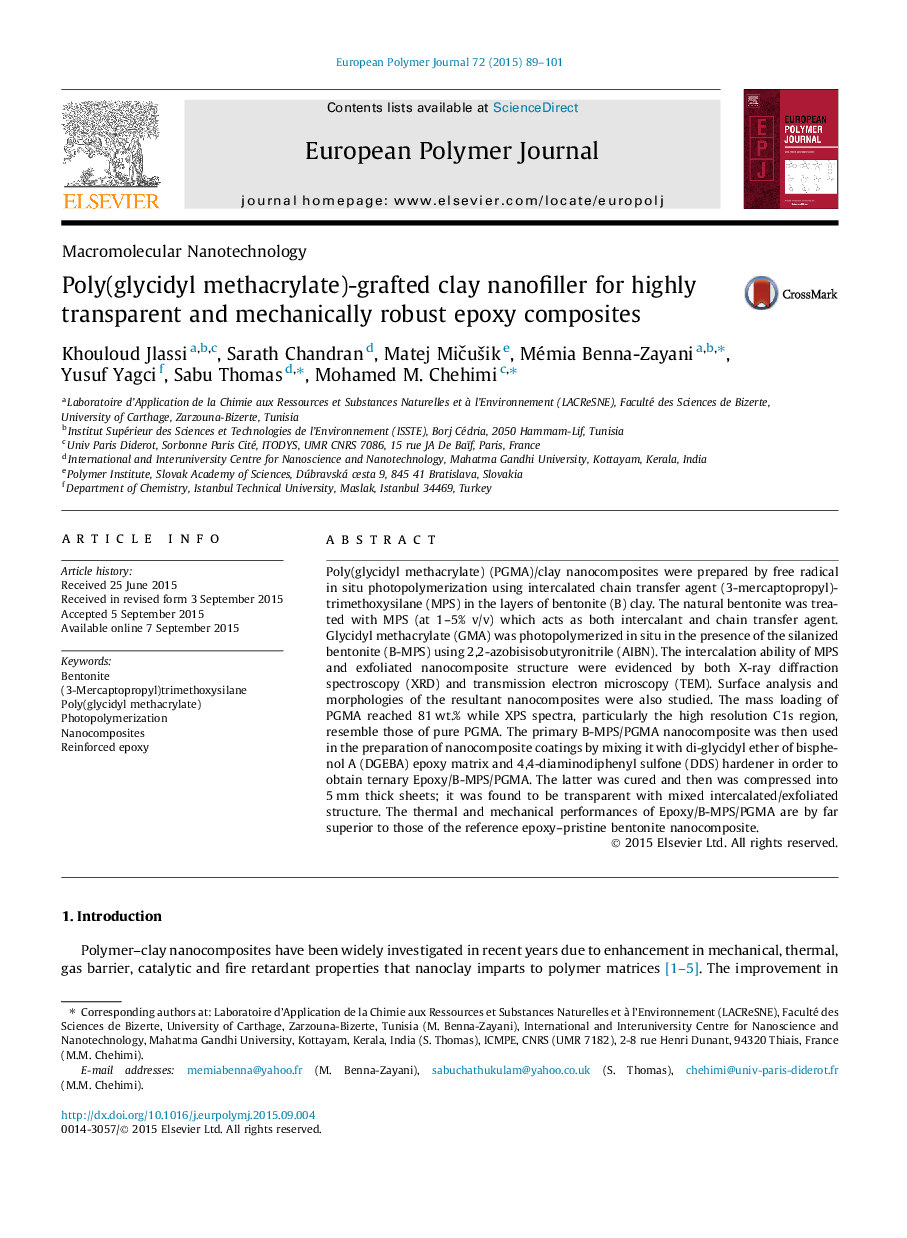| کد مقاله | کد نشریه | سال انتشار | مقاله انگلیسی | نسخه تمام متن |
|---|---|---|---|---|
| 1394711 | 1501363 | 2015 | 13 صفحه PDF | دانلود رایگان |
• Exfoliated poly(glycidyl methacrylate)/clay nanocomposites were prepared by free radical photopolymerization.
• The bentonite clay was intercalated with mercaptosilane prior to photopolymerization.
• The clay-silane/polymer nanocomposite served as hybrid nanofiller for epoxy matrix.
• Poly(glycidyl methacrylate) permits to disperse clay in- and to couple it to the epoxy matrix through the aminated hardener.
• Thermal and mechanical properties of hybrid filler-reinforced epoxy are superior to those of epoxy–pristine clay composites.
Poly(glycidyl methacrylate) (PGMA)/clay nanocomposites were prepared by free radical in situ photopolymerization using intercalated chain transfer agent (3-mercaptopropyl)trimethoxysilane (MPS) in the layers of bentonite (B) clay. The natural bentonite was treated with MPS (at 1–5% v/v) which acts as both intercalant and chain transfer agent. Glycidyl methacrylate (GMA) was photopolymerized in situ in the presence of the silanized bentonite (B-MPS) using 2,2-azobisisobutyronitrile (AIBN). The intercalation ability of MPS and exfoliated nanocomposite structure were evidenced by both X-ray diffraction spectroscopy (XRD) and transmission electron microscopy (TEM). Surface analysis and morphologies of the resultant nanocomposites were also studied. The mass loading of PGMA reached 81 wt.% while XPS spectra, particularly the high resolution C1s region, resemble those of pure PGMA. The primary B-MPS/PGMA nanocomposite was then used in the preparation of nanocomposite coatings by mixing it with di-glycidyl ether of bisphenol A (DGEBA) epoxy matrix and 4,4-diaminodiphenyl sulfone (DDS) hardener in order to obtain ternary Epoxy/B-MPS/PGMA. The latter was cured and then was compressed into 5 mm thick sheets; it was found to be transparent with mixed intercalated/exfoliated structure. The thermal and mechanical performances of Epoxy/B-MPS/PGMA are by far superior to those of the reference epoxy–pristine bentonite nanocomposite.
Figure optionsDownload as PowerPoint slide
Journal: European Polymer Journal - Volume 72, November 2015, Pages 89–101
